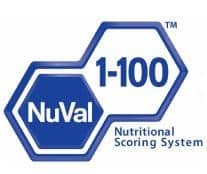 A listener recently wrote with a question about herbal supplements such as St. John’s wort, which is sometimes recommended as a natural treatment for depression. “I know you aren’t a big fan of vitamin supplements,” she writes, “but what about herbal supplements for specific disorders?”
A listener recently wrote with a question about herbal supplements such as St. John’s wort, which is sometimes recommended as a natural treatment for depression. “I know you aren’t a big fan of vitamin supplements,” she writes, “but what about herbal supplements for specific disorders?”
Generally speaking, herbal supplements aren’t used as a source of nutrition but as a concentrated source of bioactive compounds or chemicals that affect the body’s function. I think you need to use herbal supplements with as much care and caution as you would use a drug. In this week’s episode, I have three questions you should ask before taking any herbal supplement. Read or listen to it here.



 Thursday marks the unveiling of a new icon to replace the USDA’s much-maligned 20-year-old food pyramid. I’ve been getting media inquiries all week, asking about my thoughts on the move. I haven’t yet seen the new icon–it’s been kept under close wraps. (Last minute tweaking?) But from the
Thursday marks the unveiling of a new icon to replace the USDA’s much-maligned 20-year-old food pyramid. I’ve been getting media inquiries all week, asking about my thoughts on the move. I haven’t yet seen the new icon–it’s been kept under close wraps. (Last minute tweaking?) But from the 